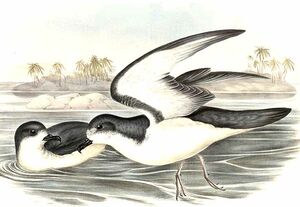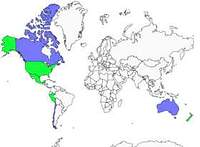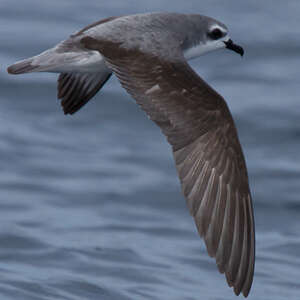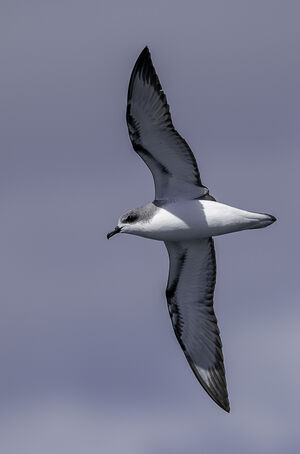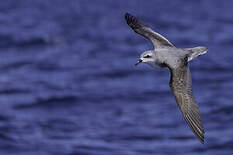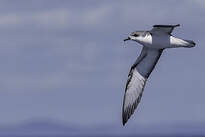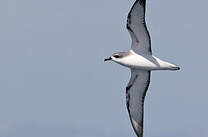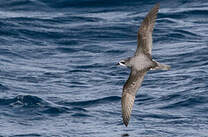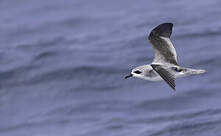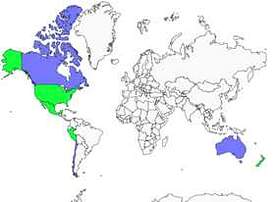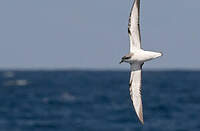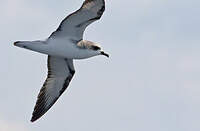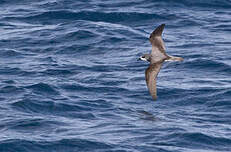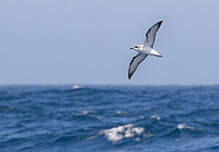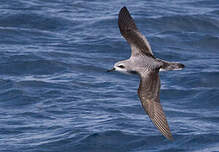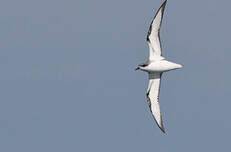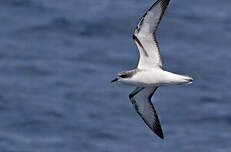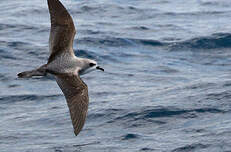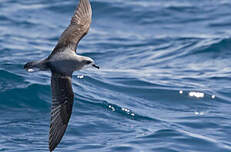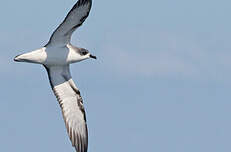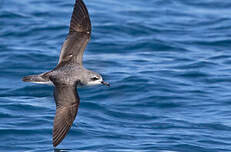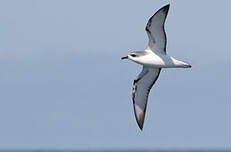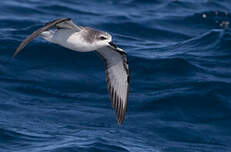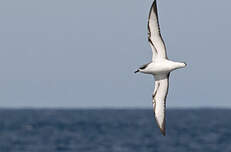Cook's Petrel
Pterodroma cookii - Pétrel de Cook
Identification
Small seabird, pale with an exceptionally long and thin black beak. White forehead, extending like a barely marked eyebrow over a dark bar below the eye and behind it. The upperparts are palish grey, with slightly darker flight feathers. A broad V-shaped, brown-black band crosses the upper parts joining one wrist to the other and passing through the rump. The undersides are almost purely white. The tips of the flight feathers are dark, as is the border of the first primary flight feathers. A half-black parenthesis starts from the wrist towards the body of the bird. This last character allows to distinguish this species of Pterodroma nigripennis, the only species with which the risk of confusion exists. This species is known as Cook's Petrel.
Subspecific information monotypic species
Foreign names
- Pétrel de Cook,
- Petrel de Cook,
- freira-de-testa-azul,
- Cooksturmvogel,
- maori hojsza,
- Cooks Stormvogel,
- Petrello di Cook,
- cookpetrell,
- Flaggermuspetrell,
- tajfúnnik malý,
- buřňák Cookův,
- Grå Petrel,
- pikkuviistäjä,
- petrell de Cook,
- petrel nowozelandzki,
- Kuka vētrasputns,
- Тайфунник Кука,
- ハジロシロハラミズナギドリ,
- 黑脚圆尾鹱,
- maoripetrell,
- 庫克氏圓尾鸌,
Habitat
Behaviour character trait
Dietfeeding habits
Reproduction nesting
Geographic range
Cook's Petrel is an endemic species of New Zealand which breeds for certain on two islands, Little Barrier off the North Island, and Codfish at the extreme south of the archipelago. It could also breed on Great Barrier. Non-breeders disperse into the Pacific Ocean as far as off the coast of Kamchatka and Canadian coasts, between 34° south and 30° north.
Threats - protection
IUCN conservation status
concern
in the Wild
threatened
evaluated
The species is classified as ENDANGERED by BirdLife. The global population is only a little bit over 50,000 pairs. The population of Codfish, could be up to 20,000 pairs in the beginning of the 20th century, now only counts about one hundred and the species might have disappeared from Great Barrier. The regression is above all due to predation by cats (eliminated from Little Barrier since 1980). Another predator, the Weka rail, that had been introduced in Codfish, has been eliminated. The eradication of the rat Rattus exulans is in progress.
Sources of information
- IOC World Bird List (v15.1), Gill, F and D Donsker (Eds). 2025-12-07.
- Albatrosses, Petrels and Shearwaters of the World, Onley Derek et Scofield Paul
- Field Guide to New Zealand Seabirds, Parkinson Brian
- Seabirds, an identification guide, Harrison Peter
- The hand guide to the birds of New Zealand, Robertson Hugh et Heather Barrie
- The Field Guide to the Birds of Australia, Graham Pizzey et Frank Knight
- Threatened Birds of the World, BirdLife International
- Vol. 1 - Handbook of the Birds of the World, Josep del Hoyo-Andrew Elliot-Jordi Sargatal
- Avibase, Lepage Denis
- New Zealand birds and birding, Narena Olliver
Other sources of interest
 Specification sheet created on
02/08/2023 by Georges Olioso
Specification sheet created on
02/08/2023 by Georges OliosoTranslation by AI Oiseaux.net
© 1996-2025 Oiseaux.net
- Accipitriformes
- Aegotheliformes
- Anseriformes
- Apodiformes
- Apterygiformes
- Bucerotiformes
- Caprimulgiformes
- Cariamiformes
- Casuariiformes
- Charadriiformes
- Ciconiiformes
- Coliiformes
- Columbiformes
- Coraciiformes
- Cuculiformes
- Eurypygiformes
- Falconiformes
- Galliformes
- Gaviiformes
- Gruiformes
- Leptosomiformes
- Mesitornithiformes
- Musophagiformes
- Nyctibiiformes
- Opisthocomiformes
- Otidiformes
- Passeriformes
- Pelecaniformes
- Phaethontiformes
- Phoenicopteriformes
- Piciformes
- Podargiformes
- Podicipediformes
- Procellariiformes
- Psittaciformes
- Pterocliformes
- Rheiformes
- Sphenisciformes
- Steatornithiformes
- Strigiformes
- Struthioniformes
- Suliformes
- Tinamiformes
- Trogoniformes

